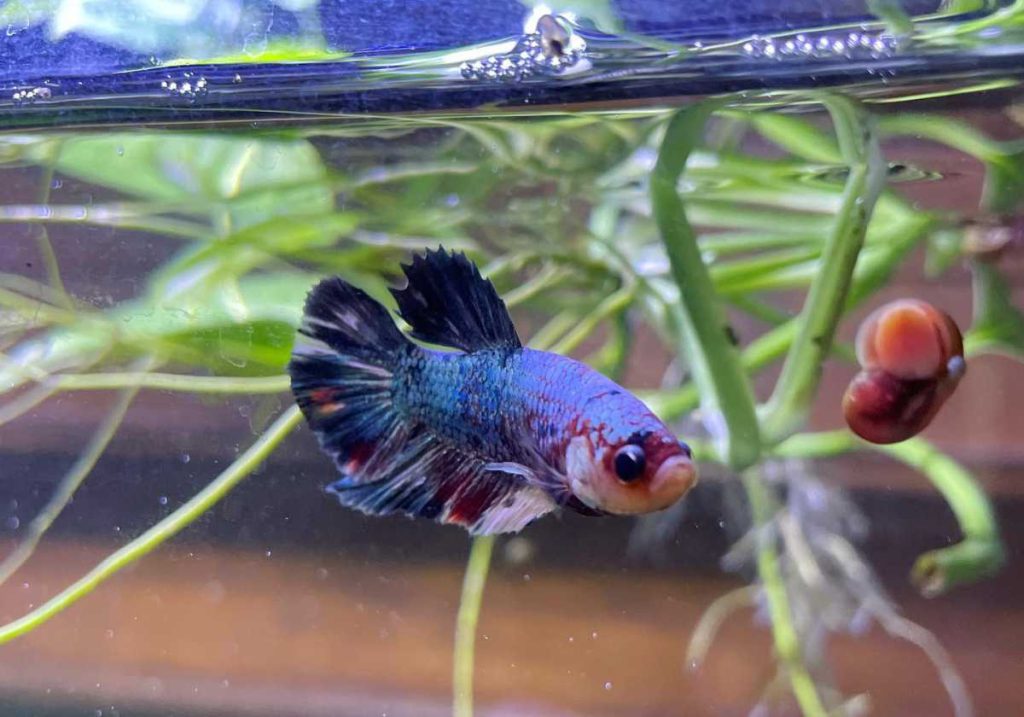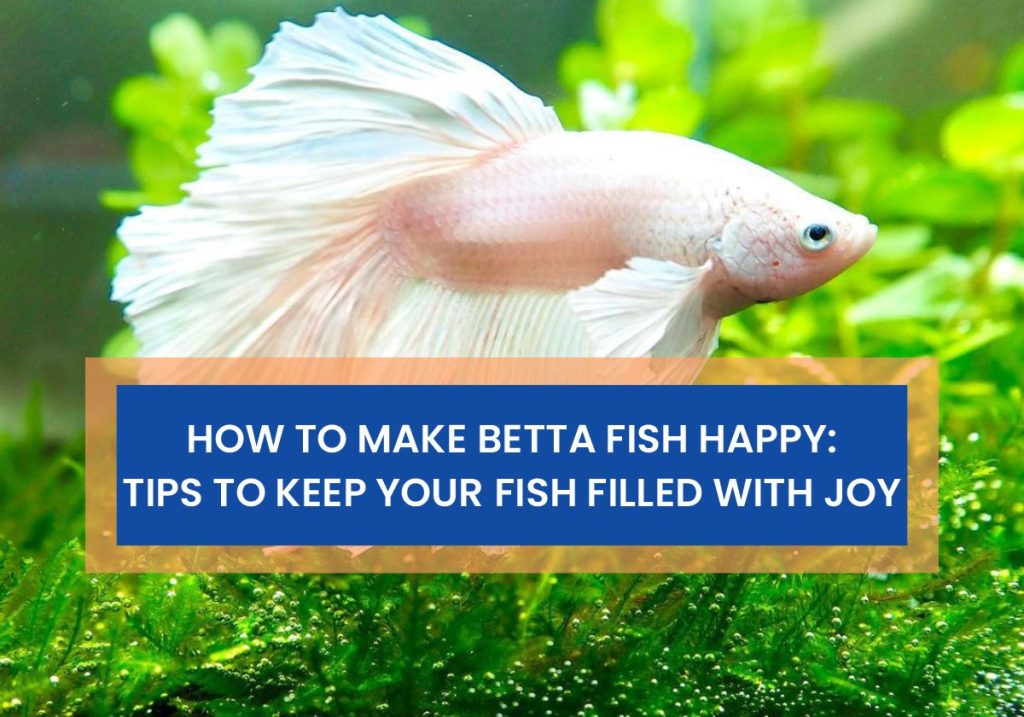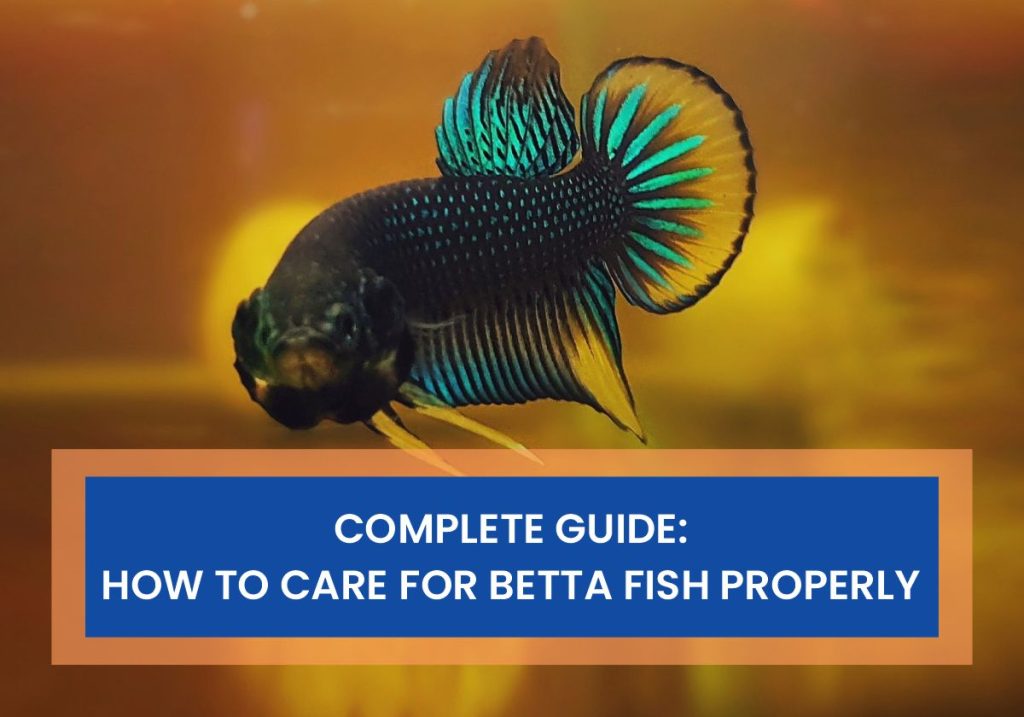As an Affiliate, We may earn a commission that doesn't cost you extra from qualifying purchases using links in this post. It helps keeps this blog running.
Proper Betta fish tank setup is crucial for the health and well-being of your fish. Betta fish are known for their vibrant colors and long, flowing fins, but they can be susceptible to stress and disease if their environment is not suitable. A well-designed tank with adequate filtration, appropriate lighting, and suitable water parameters can provide a comfortable and safe home for your Betta fish, promoting their overall health and happiness.
If your Betta tank setup is done properly, it can help prevent common health issues such as fin rot, fungal infections, and ich. Therefore, you should definitely invest time and effort in creating an optimal Betta setup to ensure a long and healthy life for your pet fish.
Choosing The Right Betta Tank
There are several betta fish tank setup ideas, and choosing the right tank for your Betta setup is a crucial first step in creating a comfortable and safe environment for your pet. Below are some important factors to consider when selecting a Betta fish tank:
Tank Size Recommendations
- Betta fish require a minimum tank size of 5-10 gallons to thrive.
- A larger tank of 10 gallons can provide more swimming space for your Betta fish if they are two and promote better water quality by diluting waste without overcrowding.
Tank Material Options and Their Benefits
- Glass and acrylic are the most common tank materials for Betta fish.
- Glass tanks are scratch-resistant and provide excellent clarity, but can be more fragile than acrylic tanks.
- Acrylic tanks are more durable and lightweight than glass but can scratch more easily.
Regardless of the material, it’s important to choose a tank that is free of any chips, cracks, or other damage.
Filter and Lighting Considerations
- A filter is essential to maintain proper water quality by removing waste and toxins. A gentle filter that does not create a strong current is best for Betta fish, as they prefer calm water.
- Proper lighting is also important for the health and well-being of your Betta fish. A light that provides a natural day/night cycle and promotes plant growth can enhance the beauty of your tank and benefit your fish.
The Proper Water Conditions For Beta Fish Tank Setup
Maintaining the right water conditions in your betta fish tank is crucial for their health and well-being. Betta fish prefer slightly acidic to neutral water with a pH range of 6.5-7.5. It’s important to test the water regularly using a reliable aquarium test kit and make necessary adjustments to maintain the proper pH level.
In addition to the tank water pH, it’s also important to monitor and maintain the water temperature and ammonia, nitrite, and nitrate levels in the tank. Ammonia and nitrite are toxic to fish, while nitrate can build up and cause issues if not managed properly. However, by performing regular water changes, partial or complete, you will be able to keep the water quality in check.
Betta Fish Tank Setup Checklist (11 Supplies)
Below is the list of supplies you’ll need for setting up your betta fish tank:
- Tank: A tank with a minimum size of 5 gallons is recommended for Betta fish. Make sure the tank has a lid to prevent the fish from jumping out.
- Heater: Betta fish are tropical fish and require a water temperature of 78-82°F. A heater with a thermostat is recommended to maintain a stable temperature.
- Filter: A filter is necessary to keep the water clean and healthy for your Betta fish. Choose a filter with a gentle flow and appropriate for the tank size.
- Substrate: Choose a substrate, such as sand or gravel, for the bottom of the tank. Rinse it thoroughly before adding it to the tank bottom.
- Decorations: Add decorations such as plants, rocks, driftwood, or caves to provide hiding spots and a natural environment for your Betta fish.
- Water conditioner: Use a water conditioner to remove chlorine, chloramine, and heavy metals from tap water before adding it to the tank.
- Food: Betta fish require a varied diet that includes pellets, and frozen or live foods. Make sure to choose high-quality, betta-specific food.
- Testing kit: A water test kit is necessary to monitor the ammonia, nitrite, and nitrate levels in the tank. Test the water weekly to ensure it stays within safe levels.
- Lighting: Provide appropriate lighting for your tank, typically 8-12 hours of light per day.
- Maintenance supplies: Keep a bucket, siphon, and cleaning supplies on hand for regular water changes and maintenance of the tank.
- Net: A small net is handy for catching the fish during tank maintenance.
How To Setup Betta Fish Tank Properly
So, you’re ready to set up your betta fish with a cozy and comfortable home! After researching several betta fish tank setup ideas. You see, setting up the perfect tank is not that hard and complicated, with the help of this guide we can do it together to ensure the health and well-being of your finned friend.
So, Let’s dive in and go through the step-by-step instructions on betta tank setup.
Total Time: 1 hour and 20 minutes
Gather Your Supplies
Before you begin, the first thing to consider when setting up the best betta fish tank is to make sure you have all the necessary supplies handy. You will need a suitable tank or aquarium, a heater, a thermometer, a filter (optional), gravel or substrate, decorations (such as hiding spots and plants), and Betta fish food.
Choose the Right Tank Size
Betta fish prefer to have ample space to swim around, so it’s important to choose an appropriately sized tank. A tank with a minimum of 5 gallons is recommended, although larger tanks such as a 10-gallon tank or larger are even better as they provide more stability and space for your Betta fish to swim and explore.
Rinse Your Tank and Substrate
Thoroughly rinse your tank and substrate (gravel or substrate of your choice) to remove any dust or debris. This will help create a clean environment for your Betta fish.
Add Substrate and Decorations
Add the rinsed substrate and other decorations to the bottom of the tank. You can use gravel, sand, or other types of substrate, but make sure it’s safe for Betta fish. Then, carefully place the decorations, such as hiding spots and plants, in the tank. These will stimulate their environment and provide your Betta fish with places to explore, hide, and rest.
When selecting substrate and decorations for your betta fish tank, it’s important to choose materials that are safe for your fish. Avoid sharp objects or rough surfaces that could potentially harm your betta’s delicate fins. Smooth gravel or sand is an ideal substrate for betta fish, as it mimics their natural environment.
Add Hiding Spots
Adding hiding spots, such as caves or plants, is crucial to create a sense of security for your betta fish. These hiding spots also serve as a place for your betta to rest and retreat when they feel stressed or threatened. Live or silk plants are great options for betta fish tanks, as they provide natural hiding spots and add a touch of beauty to the tank.
Install Heater and Thermometer
Betta fish are tropical fish and require a stable temperature between 78-82°F (25-28°C). Investing in a reliable aquarium heater that can maintain a stable temperature in your tank is crucial. So, install a heater in your tank to maintain the appropriate temperature, and place a thermometer in the tank to monitor it regularly. This will ensure your Betta fish are comfortable and healthy in their tank.
Set Up the Filter (Optional)
While Betta fish can live in tanks without a filter, having one can help maintain a clean and healthy environment for them by removing harmful substances and toxins from the water. A gentle, low-flow filter is recommended, as betta fish prefer calm water without strong currents that can stress them out.
Fill the Tank with Water
Fill the tank with water that has been treated and dechlorinated with a water conditioner to remove chlorine and other harmful chemicals. Fill it to an appropriate level depending on the size of your tank, leaving enough space for your Betta fish to swim to the surface for air.
Acclimate and Add Your Betta Fish
Now that your tank is all setup, it’s time to introduce your Betta fish to their new home! Before introducing your betta fish to their new tank, it’s important to acclimate them slowly to prevent shock or stress. To do this, float the bag containing your betta fish in the tank for about 15-20 minutes. This will allow the temperature in the bag to gradually adjust to the tank temperature. After that, open the bag and add small amounts of tank water to the bag every 10 minutes for about an hour. This will help your betta fish adjust to the water chemistry in the tank.
Then, carefully release your Betta fish into the tank to swim around and observe their behavior.
Keep an Eye on Betta Fish Behavior
During the initial days after introducing your betta fish to the tank, keep a close eye on their behavior and health. Observe their eating habits, swimming patterns, and overall well-being. If you notice any signs of stress or illness, such as loss of appetite, lethargy, or unusual behaviors, it could indicate an issue with their health or tank environment. So, take prompt action by removing it from the water as first aid, then consult a qualified fish veterinarian.
Feed Your Betta Fish
Feed your Betta fish its first food in its tank with a high-quality Betta fish food that is specifically formulated for its dietary needs. Be mindful not to overfeed, as Betta fish can easily overeat and suffer from health issues. Feed them small portions once or twice a day, and remove any uneaten food to maintain water quality.
Monitor and Maintain the Tank
Regularly monitor the temperature, water quality, and overall well-being of your Betta fish. Perform partial water changes (about 25% of the water) every week or two to maintain optimal water parameters. Keep an eye on the filter, if you have one, and clean or replace it as needed to ensure it functions properly. Also, be sure to remove any uneaten food, debris, or dead plant matter from the tank to keep it clean and maintain good water quality for your Betta fish.
Maintain a Consistent Lighting Schedule
Betta fish are sensitive to changes in their environment, including lighting. It’s important to establish a consistent lighting schedule for your betta fish tank to help regulate their natural day and night cycle. Betta fish do best with a regular light cycle of 8-12 hours of light per day. Avoid leaving the tank light on for extended periods of time or keeping the tank in a location with excessive natural light, as this can disrupt their sleep-wake cycle and stress them out. Use a timer to regulate the lighting in your tank and provide a consistent light cycle for your betta fish.
Maintain a Consistent Tank Routine
Consistency is key in Betta fish care. So, stick to a regular tank maintenance routine, including water changes, filter maintenance, and monitoring water parameters. You should avoid making sudden changes to the tank environment, as this can stress your Betta fish. Instead, gradual changes are better tolerated, and maintaining a consistent routine will help create a stable and healthy environment for your Betta fish.
Frequently Asked Questions (FAQs)
How often should I change the water in my Betta fish tank?
You should aim to change 25-50% of the water in your Betta fish tank every week or two weeks. This will help maintain clean and healthy water conditions for your fish.
How do I clean the filter in my Betta fish tank?
Depending on the type of filter you have, you may need to clean or replace the filter media every few weeks or months. Follow the manufacturer’s instructions for cleaning and replacing the filter media. Be sure to turn off the filter before cleaning it to avoid damaging the motor.
Can I use tap water for my Betta fish tank?
Yes, you can use tap water for your Betta fish tank, but you should treat it with a water conditioner and dechlorinate it to remove any chlorine, chloramine, and heavy metals. Tap water may also contain other impurities that can harm your fish, so be sure to test the water before adding your fish to it.
How do I know if my Betta fish is sick?
Look out for any signs of illness in your Betta fish, such as lethargy, loss of appetite, unusual behavior, or physical symptoms like fin rot or discoloration. If you notice any of these signs, take action immediately to address the issue and keep your fish healthy.
Can I keep multiple Betta fish in the same tank?
You should not keep multiple male Betta fish in the same tank, as they can be territorial and aggressive towards each other which will lead to a fight. However, you can keep multiple female Betta fish together in a larger tank with plenty of hiding spots and territories.
Can I put betta fish in the new tank immediately?
No, you should not put Betta fish in a new tank immediately, as this can cause stress and harm to the fish. You should instead wait and prepare the tank then cycle the water environment, then acclimate your fish to the water by floating it. Doing this will create a healthy and stable environment for your Betta fish to live in.
Do Betta fish need a bubbler in their tank?
Betta fish do not necessarily need a bubbler in their tank, as they can breathe from the surface of the water. However, adding a bubbler or air stone can help improve water circulation and oxygenation, which can benefit your Betta fish and other tank inhabitants. It can also create a pleasing aesthetic effect in the tank.

I’m Akin Bouchard. Even though I now own several different fish species, I first became a koi pond owner because I loved these creatures and wanted to turn my passion into something more serious. I take pride in my collection of koi fish and love sharing my knowledge with others interested in these beautiful creatures.
A Comprehensive Guide to Training Your Fish to Perform Amazing Tricks Feats




